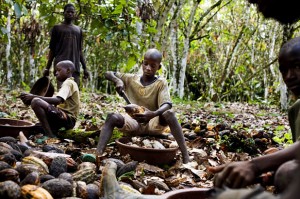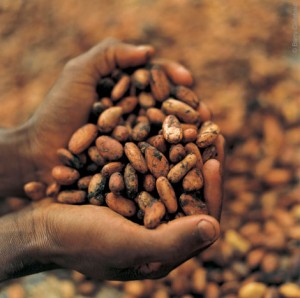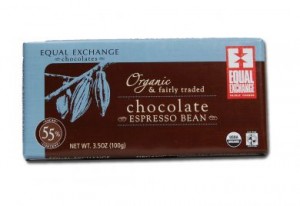Green Halloween Tips: The Politics of Chocolate
 I saw a headline recently that made me laugh and cringe at the same time: “Beware: Child Slave Labor Made Your Kit Kat Bar!”
I saw a headline recently that made me laugh and cringe at the same time: “Beware: Child Slave Labor Made Your Kit Kat Bar!”
And then I realized, that is exactly the truth that needs to be emphasized more around this time of year. The tons and tons of cheap chocolate the big two candy maker monopolies (Hershey and Nestle) source more than likely, still does come from cocoa plantations that “employ” children as young as six.
Cocoa beans are harvested mainly in developing countries where the political situation can be shaky, to say the least. The Ivory Coast produces 30 to 40 percent of the world’s cacao, and is still one of the worst offenders when it comes to labor practices. Despite the Cocoa Protocol, established in 2001 as an audit system for African governments to help monitor child labor, the country’s civil wars and disputed elections have made it difficult to track the worst offenders.
 The number one way you can be sure your chocolate has been harvested sustainably, without the use of slave or child labor, is to look for Fair Trade certification on the packaging.
The number one way you can be sure your chocolate has been harvested sustainably, without the use of slave or child labor, is to look for Fair Trade certification on the packaging.
The concept of Fair Trade began in the 1940s as a way to help poor communities sell their products to more well-off ones. It has since evolved into an organization that partners with companies that provide workers in developing countries a living wage, are anti-slave and anti-child labor, and that use sustainable environmental practices.
Fair Trade USA provides a list of certified chocolate companies to help you make informed buying decisions.
 Additionally, cocoa trees are highly susceptible to disease and pests, so the use of pesticides is widespread. Organic chocolate means the chocolate is free of pesticides, synthetic fertilizers and GMOs.
Additionally, cocoa trees are highly susceptible to disease and pests, so the use of pesticides is widespread. Organic chocolate means the chocolate is free of pesticides, synthetic fertilizers and GMOs.
Luckily, organic chocolate is becoming easier to find locally, with Whole Foods and Trader Joe’s both carrying USDA-certified organic chocolate. Raw organic chocolate, while much less sweet than the non-raw kind, is gaining in popularity among the vegan and raw food set.
One of the benefits of buying raw is that the cacao is heated at very low temperatures, using only a very small amount of energy compared to non-raw chocolate production.
 The taste of organic chocolate is heavenly – once you’ve eaten some with a high cocoa content (meaning it is a more pure version of the cocoa), you’ll be spoiled to the high fructose corn syrup-laden milk chocolates of the standard Hershey and Nestle variety. Organic dark chocolate is also very heart healthy.
The taste of organic chocolate is heavenly – once you’ve eaten some with a high cocoa content (meaning it is a more pure version of the cocoa), you’ll be spoiled to the high fructose corn syrup-laden milk chocolates of the standard Hershey and Nestle variety. Organic dark chocolate is also very heart healthy.
Help spread the word about alternatives to cheap Halloween candy – it may bring back childhood memories for you, but it doesn’t create happy childhood memories for the children involved in its toxic production.

Recent Comments